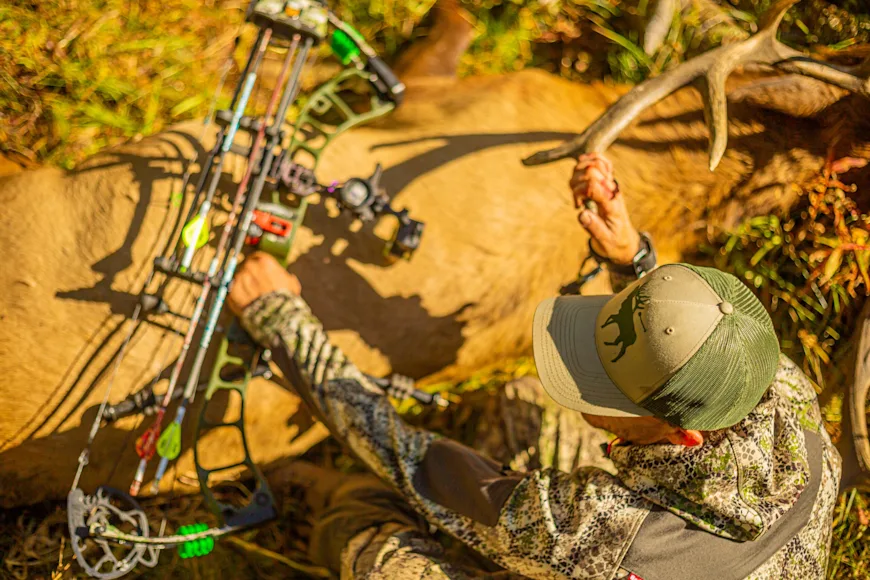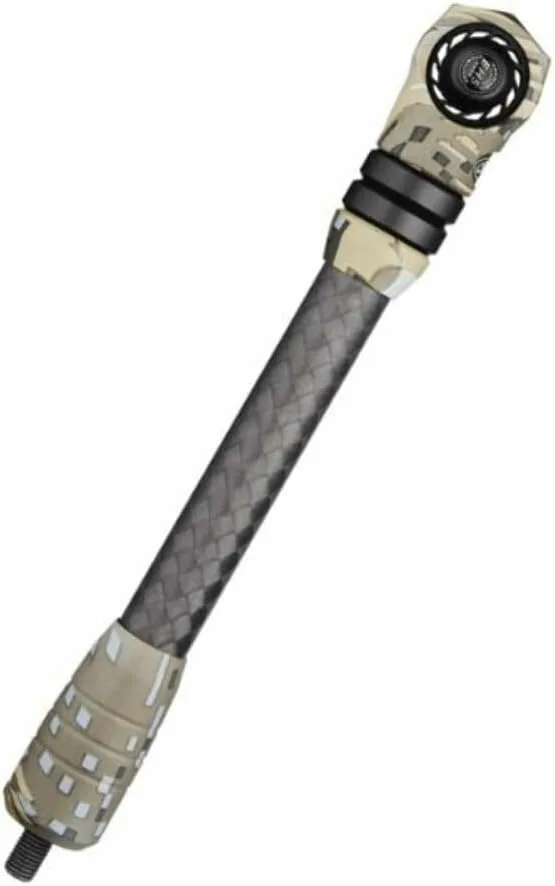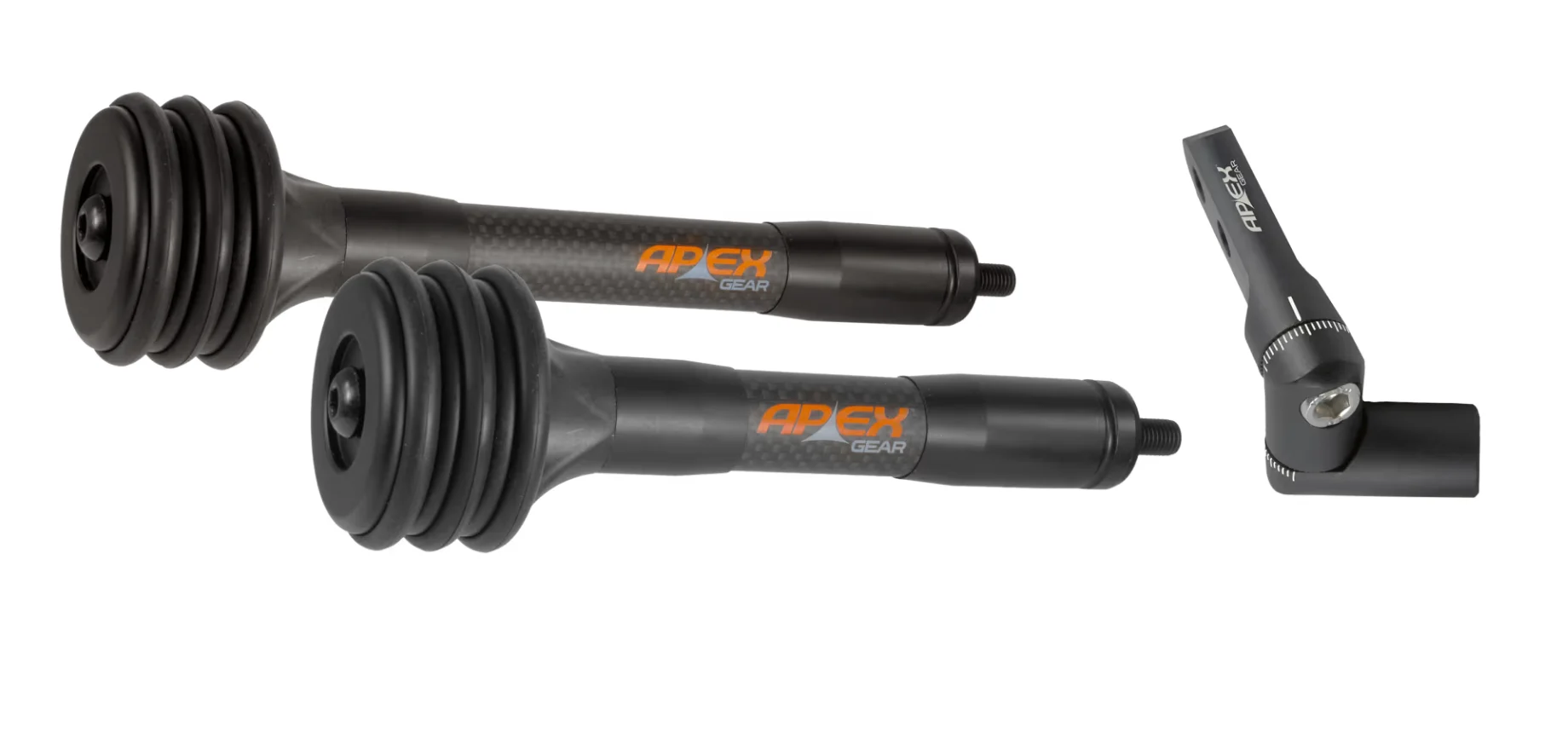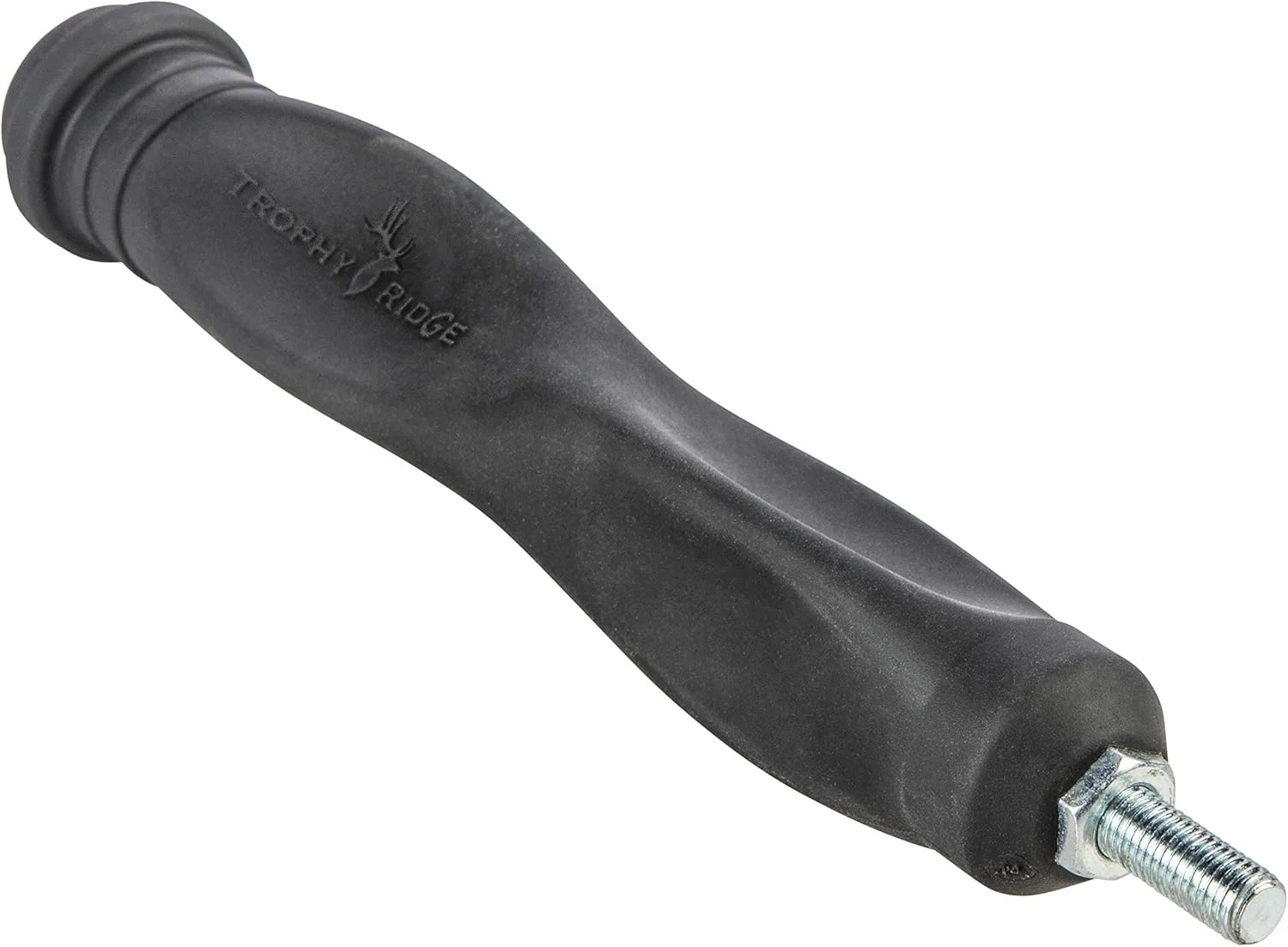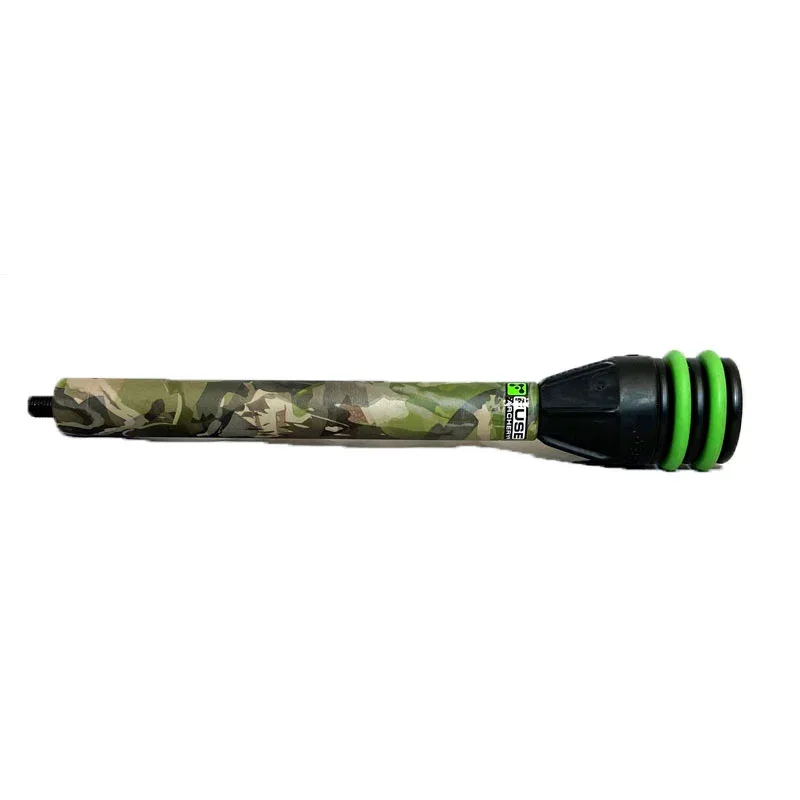We may earn revenue from the products available on this page and participate in affiliate programs. Learn more
When it comes to bow stabilizers, archers tend to be in one of three camps. Folks in the first camp love stabilizers, see them as must-have accessories, and wouldn’t dream of shooting a compound bow without one. The second camp views them as largely pointless, and not worth bothering with or putting a stabilizer on a bow. And the third is simply confused by the purpose of the tool.
If you’re in camp three, don’t fret, this article is going to answer all of your questions about stabilizers and give you absolute clarity. If you’re in camp two, don’t click away. Stay with me because there are actually very good reasons why you need one of the best bow stabilizers.
Best Overall: Bee Stinger Sport Hunter Xtreme
Best for Compound: Mathews Flatline Stabilizer
Best Budget: Trophy Ridge Blitz Stabilizer
Best for Whitetail Hunting: Fuse Carbon Torch FX Stabilizer
Best for Beginners: Apex Gear Endgame Bow Stabilizer
Best Bow Stabilizers: Reviews & Recommendations
Best Overall: Bee Stinger Sport Hunter Xtreme
Specs
Length: 6 or 8 inches
Pros
Side bar mount improves balance
Removable weights allow you to customize your setup
Separate front and end pieces for adjustability
Cons
Pretty expensive
A do-it-all bow stabilizer kit that gives the bowhunter a front and back bar and a sidearm mount that provides maximum adjustability, the BeeStinger Sport Hunter Xtreme Kit is just what the accuracy doctor ordered. The front bar can be had as an 8- or 10-inch option, and the back bar comes in lengths of 6 and 8 inches. Being able to adjust the length and weight of both the front and back bars is a game-changer for a better shot. With its Elite Side Bar mount, this hunting bow stabilizer provides maximum balance and stabilization, making it one of the best compound bow accessories out there.
Best for Compound: Mathews Flatline Stabilizer
Specs
Length: 6, 8, 10, and 12 inches
Pros
Comes in 8 finishes to match your bow
Adjustable weight
Incredibly quiet
Cons
Pieces may pop off easily
We’ve tested some of the best Mathews bows ever made
, so we know the high quality that the brand produces—and this Mathews bow stabilizer is no different. Available in 4 lengths from 6 to 12 inches and in 8 finishes (including black, Realtree Edge, and Optifade Subalpine), it can integrate seamlessly into almost any compound bow setup. One of the highlights of this stabilizer is the adjustable end cap weights, which you can add or remove to increase or decrease the amount of weight on the end of the stabilizer. Hunters who use the Mathews stabilizer rave about how quiet it is thanks to the dampening technology and the lightweight carbon rod.
Best Budget: Trophy Ridge Blitz Stabilizer
Specs
Length: 8 inches
Pros
Affordable price
Easy to set up and fits any bow
Lightweight
Cons
Lacks any adjustable parts
Only comes in black
Finding a cheap bow stabilizer that actually performs well can be tough. Fortunately, this Trophy Ridge bow stabilizer does just that. Easy to set up and even easier to install on any compound bow, it’s made with a rubber outer that’s effective at dampening vibration and silencing noise. It also comes with a convenient wrist strap and a leather mount. Many hunters rave that the Trophy Ridge Blitz works just as well as more expensive archery stabilizers but at a fraction of the price. You can’t beat that.
Best for Whitetail Hunting: Fuse Carbon Torch FX Stabilizer
Specs
Length: 6, 8, or 10 inches
Pros
Very lightweight
Comes in a variety of camo patterns
More affordable than others on this list
Cons
Better at dampening than stability
Available in lengths of 6, 8, and 10 inches, the Fuse Carbon Torch FX comes with three 1-ounce weights and is fitted with a balancing and noise-dampening rubber front dampener. The carbon tube construction is light but bulletproof, and your choice of colored stealth discs go between the weights to further squelch noise and soak up vibration. These stabilizers work wonderfully as a standalone option or with an offset mount if you are the sort of whitetail hunter that wants a higher level of stabilization. You can choose from six camo finishes, including patterns from Under Armour, Sitka, Realtree, and KUIU.
Best for Beginners: Apex Gear Endgame Bow Stabilizer
Specs
Length: 6 or 8 inches
Pros
More budget-friendly price
Removable weights for customization
Lightweight carbon fiber tube
Cons
No bells or whistles
An economical yet serious option that improves overall bow balance, the Apex Gear End-Game features a lightweight carbon-fiber tube and individual weights to ensure exact customization to help you achieve better accuracy. Going between the weights and absorbing noise and vibration are dampening rings, and the stabilizer comes with seven different rings in an array of colors. The End-Game is available in lengths of 6 and 8 inches.
What to Consider When Choosing a Bow Stabilizer
A stabilizer is simply a weighted arm (or arms) that attaches to a threaded hole at the front of the riser, opposite the grip. While many believe the job of a bow-mounted stabilizer is to soak up vibration, that’s only the half of it. In fact, less than half. Yes, stabilizers will soak up some noise at the shot and deaden some of that annoying hand tickle from the riser. But its main job is to help stabilize the archer at anchor, during the shot, and during the follow-through. That’s the tool’s job—to add weight and help you achieve perfect balance with your bow, so that you feel stable enough to hold that pin on the target and hit more 10-rings.
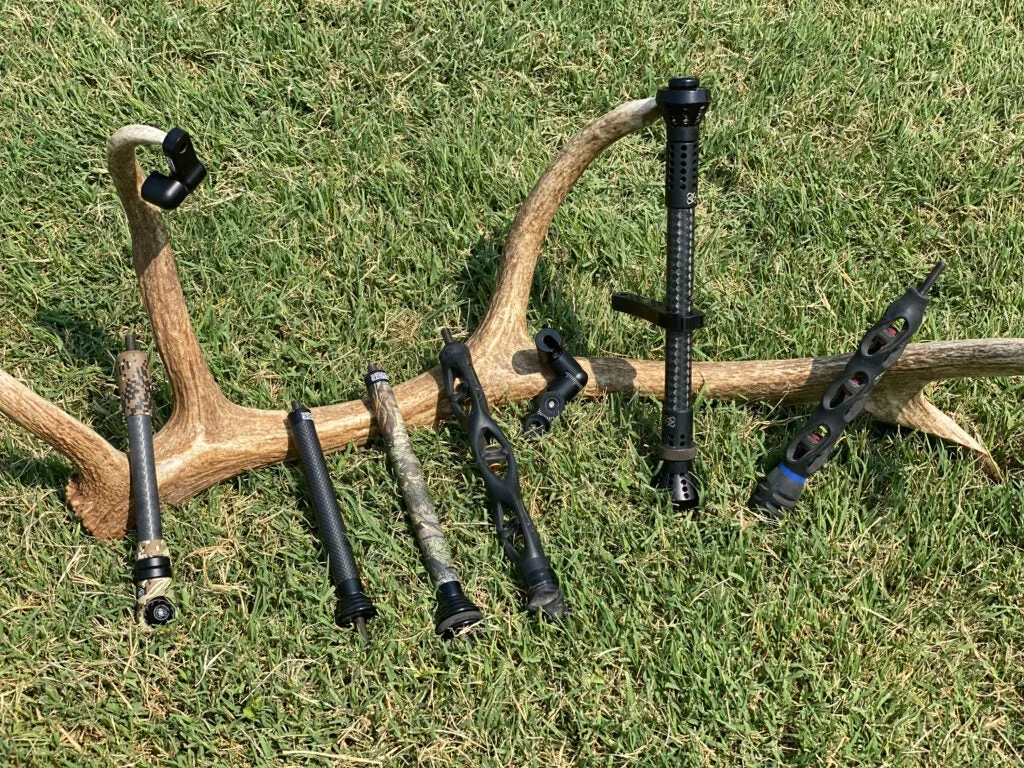
Length
Getting the best stabilizer boils down to how you use your bow. If you are mainly a woods whitetail hunter who shoots occasionally and will limit your field shots to 40 yards and in, you will do fine with a budget-friendly model in the 6- to 8-inch range. This won’t add much stabilization to the bow, but it will help thwart noise and vibration. This type of stabilizer is also a good choice for new archers. There’s no sense dropping a ton of green on a stabilizer until you know how you feel about shooting a bow, and start formulating some plans for the future.
On the other hand, if you are an experienced bowhunter who enjoys flinging arrows semi-regularly on the range, shoot a few 3-D tournaments each year or do some traveling to hunt, I recommend trying a longer stabilizer in the 8- to 12-inch range, and make sure the stabilizer is customizable. By this, I mean its weight. A stabilizer worth its salt will come with several one-ounce weights with padded spacers. Tinkering with out-front weight can lead to a better overall feel at full draw, and if you do your job and let the release fire the bow, a perfectly weighted stabilizer will help follow-through.
Accuracy
If you’re obsessed with accuracy—shooting your bow multiple times a week and looking to stack carbon at distances beyond 50 yards, a stabilizer is a must-have item. And a short, hunting model isn’t going to cut the mustard. You need weighted perfection that leads to extreme bow balance at full draw. For this, I recommend going with a front-and-back-bar system. In layman’s terms, this is a stabilizer with one arm extending in front of the riser, and another arm protruding behind the riser toward the string.
Don’t worry about how the system looks or even feels at first. We don’t care about looks. We care about jaw-dropping accuracy at ranges close and far. This system’s job is to help your bow lock on target at full draw and stay there. Some testing and tinkering with weights and the angle of the back bar—how far down toward the lower cam and toward or away from the riser it’s angled—will give you a full-draw feel you won’t believe. It will settle your sight faster and shrink pin-float.
Hunting Use
I realize many reading this are likely serious whitetail hunters, so I wanted to address the idea of a back bar when it comes to pursuing this species. I had a buddy say to me a few years ago, “I only hunt whitetails from trees and blinds. I don’t like the weight a stabilizer adds to my bow, and when shooting no farther than 40 yards, I see no point in it.”
He is a diehard member of the camp two I mentioned earlier. He thinks stabilizers are kind of pointless. Well, I have a few questions for you camp two folks and those of you on the fence about trying a back bar when it comes to bowhunting whitetails.
1.) Does the wind ever blow in your treestand?
2.) When sitting in a ground blind, do you ever find yourself holding at an awkward angle?
3.) When you pull back on a gagger buck, does your pin seem like it’s attending an 80s dance party?
4.) Do you ever head West to chase pronghorn, mule deer, or elk?
If you answered yes to any of those questions, I highly recommend considering the use of a front-and-back-bar system. The added overall weight and the back bar’s ability to offset the tipsy nature created by bow-mounted accessories like a sight and quiver full of arrows will help you hold steadier, both in a stiff breeze and during moments when your heart is about to jump out of your chest.

Ground-blind hunters will quickly appreciate the balance their bow can have when holding at awkward angles in the blind. Of course, tree stand and ground blind hunters can select shorter front and back bars to keep their rig as maneuverable as possible.
More and more Midwestern and Eastern hunters are expanding their horizons and heading West each fall. The West is vast and rugged. The terrain is steep, the wind is constant, and shots tend to be a tad longer. You’ll definitely want a front-and-back-bar system here, and if you already have one on your whitetail bow, you don’t need to worry about changing a thing. Successful bowhunting, after all, revolves around consistency.
FAQs
Q: Is a longer bow stabilizer better?
When it comes to stabilizer length, think of a tight-rope walker. Do they use a pencil or a very long pole? You see where I’m going? A longer stabilizer will boost balance at full-draw, period. Those considering the idea of a front-and-back-bar system will need to test and tinker. I run a 12-inch front stabilizer with a 10-inch back bar for hunting, and I shoot the same system at 3-D shoots. As far as weight goes, a heavier bow will hold steadier on target and be less shaky in the wind and during moments of buck fever. The only way to achieve an ideal weight ratio—it will be different for every shooter—is to experiment.
Q: Should I get a counter-slide stabilizer?
If you like the idea of a more extended front bar with an added back bar you can customize with weight but aren’t in love with the idea of an offset attachment and having to purchase a pair of stabilizers, take a look at a counter-slide model. With this, a mount attaches to the riser’s stabilizer hole and accepts a single bar that runs through the mount’s center. A set screw, or multiple set screws, let you slide the bar back and forth to achieve ideal front and back length. In addition, weights can be added to the front and back end. This is a great stabilizer choice for shooters looking to experiment with a front and back stabilizer feel. The only drawback is that the bar is straight. You can move to one side in the mounting bracket to achieve left-to-right balance, but you can’t angle the backend of the stabilizer itself.
Q: Does a compound bow stabilizer affect maneuverability?
To some degree, sure. Running a long stabilizer could cause problems in a small blind or a tight tree stand in thick cover. Personally, I think it’s worth it. Each year, my hunts take me from the towering Rockies to the hardwoods of the Midwest, and not once has my front and back bar system cost me in any significant way in terms of maneuverability. But this is a personal choice. Like weight and length, maneuverability should be tested and fitted to your liking.
Q:Are bow stabilizers worth it?
In a word, yes. But some are more worth it than others. A basic 5-inch hunting stabilizer can help a little on the noise and vibration front, but it won’t do much to help you balance your bow and be steadier during the shoot. But they don’t cost much, so why not? The longer, more complicated stabilizer kits, on the other hand, can be kind of pricey—but, if accuracy is your main goal and you don’t mind carrying extra weight, these are worth every cent. They are all but certain to make you a better bow shot.
Best Bow Stabilizers: Final Thoughts
Outfitting your bowhunting rig with one of the the best bow stabilizers for the conditions you’re likely to encounter can help improve your accuracy, and even make shooting more enjoyable. Think long and hard about how you use your bow, pick the best stabilizer using the info above, and hit the woods.
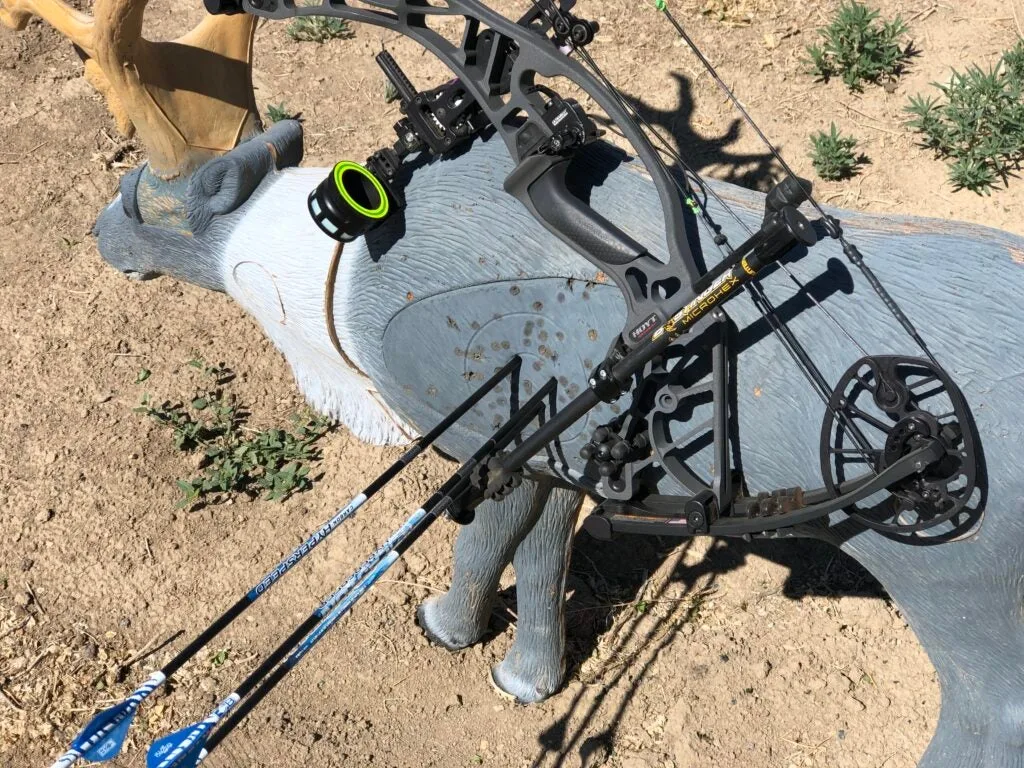
Why Trust Us
For more than 125 years, Field & Stream has been providing readers with honest and authentic coverage of outdoor gear. Our writers and editors eat, sleep, and breathe the outdoors, and that passion comes through in our product reviews. You can count on F&S to keep you up to date on the best new gear. And when we write about a product—whether it’s a bass lure or a backpack—we cover the good and the bad, so you know exactly what to expect before you decide to make a purchase.

